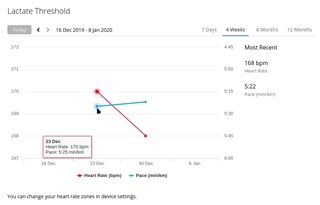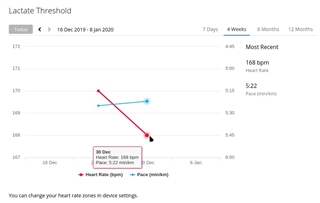Hi everyone,
I'm trying to understand how Lactate Threshold works but I'm a bit confused. In the last few weeks I went from an LT of 5:25min/km - 170bpm to 5:22min/km - 168bpm (see below screenshots). So that means (if I'm getting it right) that I have to run faster to improve further (from 5:25 to 5:22 min/km). That to me means I've improved my fitness level... but why the bpm went down from 170 to 168? Does that mean my body can sustain a slightly faster pace at a lower HR? (which again means a fitter body?)
Also, in those weeks I was following a Garmin Coach program (Half Marathon). I've decided to reschedule my events and I'm training for a full Marathon now so I cancelled that plan and joined another one (Intermediate Marathon) which is not a Garmin Coach one. Since then my watch hasn't logged new values for LT. Does that mean it hasn't changed since last time or it's simply not recorded if I don't use a Garmin Coach plan? If that's the case how can I keep an eye on my LT now?
Before:

After:

Thanks a lot,
Aurelie

